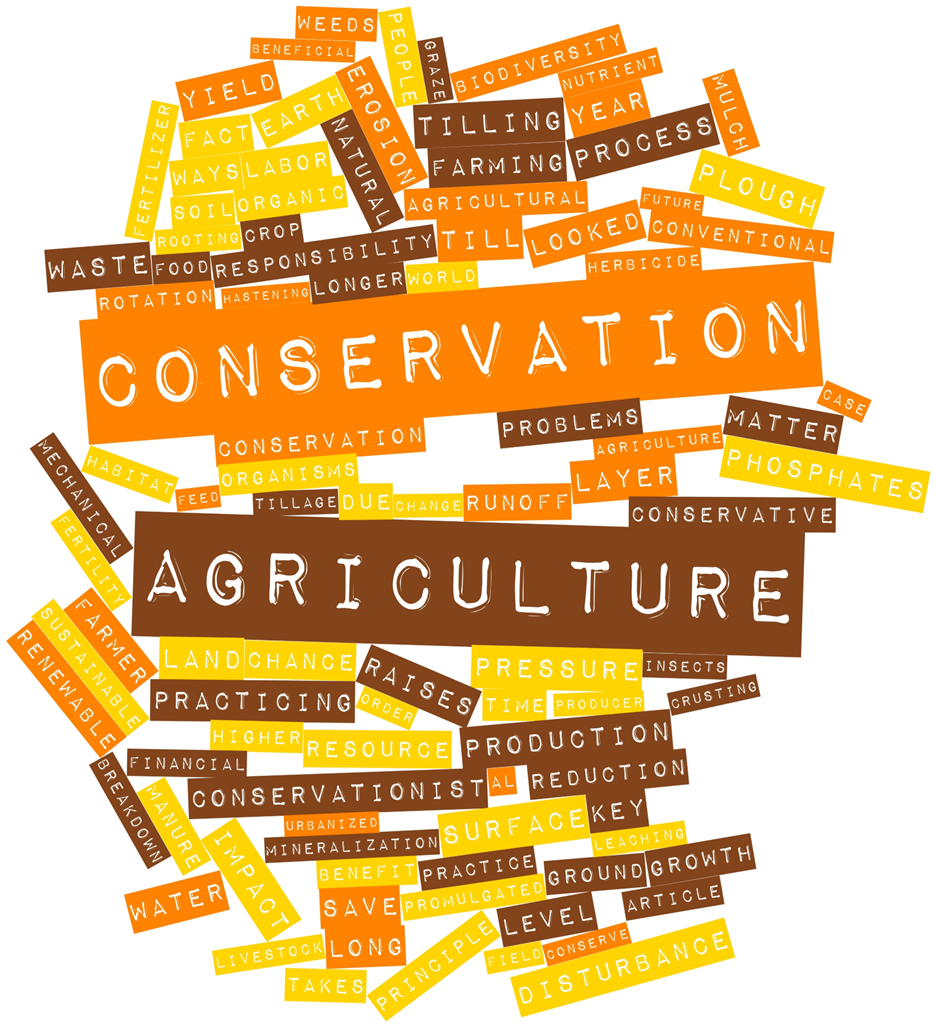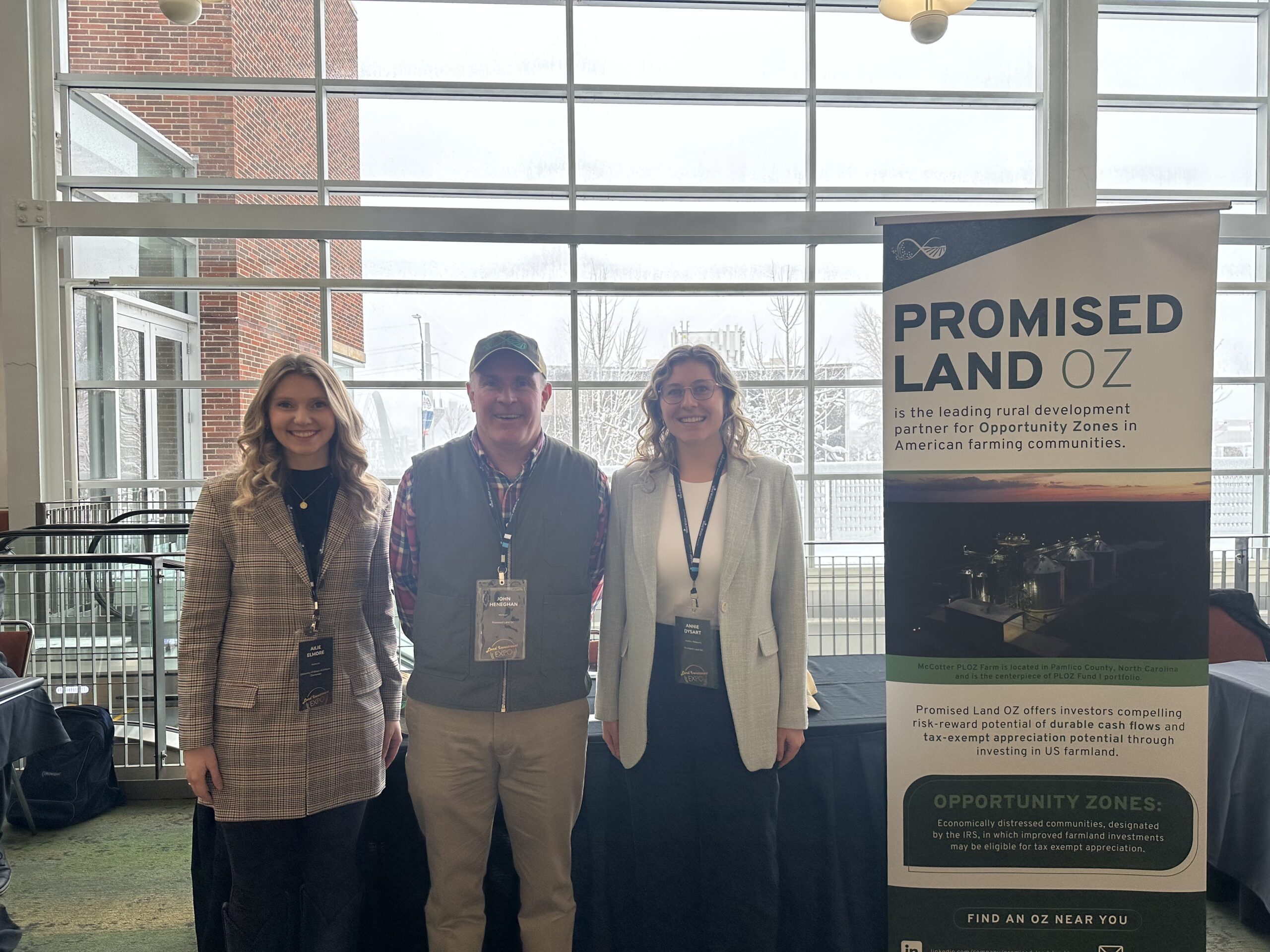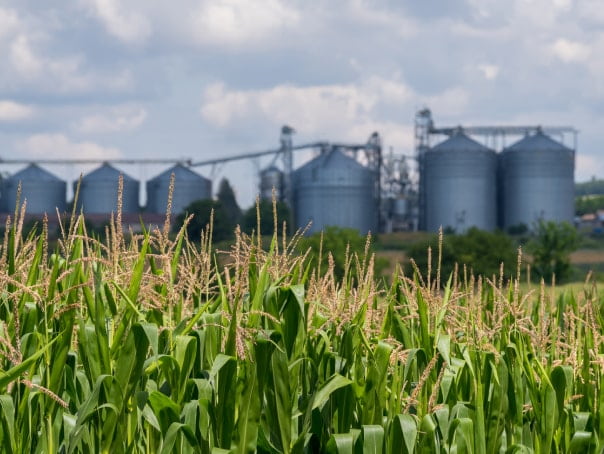
Introduction
Growing up on a family farm in rural Illinois, I was taught the importance of taking care of the land to preserve it for the next generation. Farming is not only about maximizing profits, but also about adopting sustainable farming practices that benefit the soil and environment to preserve the land for future generations. The soil is a living, breathing organism, and if cared for correctly, it can have both favorable environmental and economic impacts. Farmers did not always have the right technology and sufficient knowledge about these complex and delicate ecosystems to be able to properly care for the soil in the past. For example, the Dust Bowl of the 1930s was partially caused by harmful agricultural practices that left the soil exposed and vulnerable to erosion. The Dust Bowl is an extreme example of a man-made ecological disaster. Naïve farmers of the 1920s conducted extensive deep plowing of the virgin topsoil of the Great Plains.
The technological advancement of the combustion engine led to the widespread use of the combine harvester and the rapid and extensive conversion of naturally arid grasslands to cultivated cropland. The native, deep-rooted grasses of the Great Plains would normally trap soil and moisture during periods of drought and high winds. However, the unanchored cropland soil turned to dust in the drought of the 1930s and prevailing winds blew the soil into huge dust clouds that blackened the sky. The ecological and human tragedy of the Dust Bowl was famously retold in the novel The Grapes of Wrath (1939) by John Steinbeck. And if you think an agricultural-based ecological disaster like the Dust Bowl can not happen in this day and age, check out the organic-focused, mini-dust bowl called Gunsmoke in South Dakota.
As agricultural technology has evolved, and researchers have learned more about the ecological interplay between crop production, the soil, and the environment, more emphasis has been placed on preserving soil health. In the 1980s, a movement to reduce the amount of tillage on farms began to grow, and now no-tillage or reduced tillage is used on many farms today. Tillage is the preparation of soil prior to planting and the cultivation of soil after the harvesting of crops. A new focus on the environmental impact of agriculture also began at this time. Today, farmers have more technology than ever to benefit the environment, and there is still a lot of research being conducted around sustainable or “climate-smart” agricultural practices.
This trend culminated in the January 27, 2021, Executive Order 14008: Tackling the Climate Crisis at Home and Abroad from the Biden Administration which promotes climate-smart agriculture as a way to mitigate climate change. The Executive Order specifically mentions agriculture and states: “America’s farmers, ranchers, and forest landowners have an important role to play in combating the climate crisis and reducing greenhouse gas emissions, by sequestering carbon in soils, grasses, trees, and other vegetation and sourcing sustainable bioproducts and fuels.” So, what exactly does climate-smart agriculture mean, and what practices are considered climate-smart? The USDA’s Climate-Smart Agriculture and Forestry Strategy: 90-Day Progress Report defines climate-smart practices as activities that store carbon and improve resilience and soil health. Some examples of these activities from the report are: reduced and no-till, planting cover crops (crops grown for the protection and enrichment of the soil), managing the grazing of cattle, managing the way cows are fed, manure management, fertilizer management (efficient use), improved irrigation efficiency (reduced water usage), reduced fuel use, energy conservation, and improved forest management. The most widely used definition for climate-smart agriculture is from the Food and Agricultural Organization of the United Nations (FAO) which defines climate-smart agriculture as “agriculture that sustainably increases productivity, enhances resilience (adaptation), reduces/removes GHGs (mitigation) where possible, and enhances achievement of national food security and development goals1.”
Current Practice Adoption
Many different agricultural practices are considered climate-smart agriculture. But how many farmers are actually using climate-smart practices on their farms? USDA’s National Agricultural Statistics Service (NASS) and ERS (Economic Research Service) conduct a national-level survey of farming operations called the Agricultural Resource Management Survey (ARMS). Three of the most commonly used climate-smart practices on US farms are reduced and no-till, cover crops, and fertilizer management. Cover crops are crops planted on fields when there is not a cash crop growing. Cover crops keep the soil covered to slow erosion, improve soil health, prevent nutrient losses, and a host of other benefits. Farmers apply fertilizer to their farm to ensure plants have the proper nutrients to grow. The most commonly applied nutrients are nitrogen, potassium, and phosphorus. However, if improperly managed or applied, these nutrients can be lost into the environment through the air or water and cause environmental damage.
Information about the adoption of these practices is available in the ARMS survey data. The chart below shows the most recent survey data regarding tillage in the US.

The survey suggests farmers use conservation tillage on 70% of soybean (2012), 65% of corn (2016), 67% of wheat (2017), and 40% of cotton (2015) acres in the US2.
Although conservation tillage adoption is high, cover crop adoption in the US is still very low, but increasing. Cover crop adoption totaled 15.4 million acres in 2017, a 50% increase from the 10.3 million acres planted in 2012. This is equal to only 3.9% of US cropland3. The survey also found farmers use nitrogen at higher rates than the recommended benchmark application rate on 36% of corn acres, 19% of cotton acres, 22% of spring wheat acres, and 25% of winter wheat acres4. There is a lot of opportunity for future adoption and improvement when considering climate-smart agricultural practices in the US, particularly in the use of cover crops.
Increased Incentives to Promote Adoption
Farmers can receive financial incentives for the adoption of climate-smart agricultural practices on their fields. The policy focus on climate-smart agriculture could also lead to new opportunities and increased governmental financial support for farmers. One option for farmers is the USDA’s Environmental Quality Incentives Program (EQUIP) which provides financial and technical assistance to farmers and forest managers. The USDA’s Natural Resources Conservation Service (NRCS) administers EQUIP. Through EQUIP, NRCS provides farmers with financial resources and one-on-one help to adopt conservation practices5. NRCS has identified a sub-set of conservation practices critical to climate change mitigation to encourage farmers to adopt these specific climate-smart agricultural practices. Another governmental program that can provide financial support for farmers who adopt climate-smart agricultural practices is the Conservation Stewardship Program (CSP). The CSP helps farmers adopt conservation practices on grazing and pasture lands6. Farmers also may be able to receive benefits from adopting climate-smart agricultural practices through Federal crop insurance programs managed by the USDA. For example, the USDA’s Pandemic Assistance for Producers initiative will provide a $5 per acre reduction in crop insurance premiums to farmers who plant a cover crop. Illinois, Indiana, and Iowa have existing programs for farmers to receive a payment for planting cover crops as well7.
Ecosystems markets are another way of promoting climate-smart agricultural practices and can bring additional revenue to the farmer. Agricultural carbon market programs pay based on carbon sequestered or emissions reductions achieved on farmland and can generate additional farm income and further incentivize sustainable farming practices. For example, Indigo Ag announced payments of $30 per credit to Carbon by Indigo farmers for verified credits produced and sold in both the 2020 and 2021 carbon crop years. Carbon credits are based on the amount of carbon dioxide the farmer either draws down into the soil and GHG (Green House Gas) emissions the farmer reduces above the soil (for example, through improved nitrogen timing) – beyond what was already happening on the farm. One carbon credit is typically issued for each metric ton of carbon dioxide sequestered or reduced. Other ecosystem services have similar pilot programs, such as Ecosystem Services Market Consortium (ESMC) ‘s water quality, water use conservation, and biodiversity credits8. These programs try to place a value on the benefits of environmentally friendly agricultural practices on water and biodiversity to generate a saleable credit. Many of these markets and programs are still in the development or pilot phases. There could be additional opportunities in the future for farms to generate incremental revenue by valuing the environmental benefits these practices provide. For example, the recently passed Inflation Reduction Act (IRA) will provide more than $20 billion to support climate-smart agricultural practices. The IRA legislation provides multi-year funding to the USDA’s EQUIP and other conservation programs to promote the reduction in greenhouse gas emissions from farming and for the capturing, sequestering, and storing of greenhouse gases in soils. These government-backed and ecosystem-backed climate-smart ag compensation regimes will eventually create more diverse and valuable revenue streams for farmers and farmland owners and potentially a significant valuation uplift for farmland.
Investing in Climate-Smart Agriculture
Promised Land Opportunity Zone is taking a pragmatic approach to investing in climate-smart agriculture. Recognizing the growing demand for organically produced grains, climate-smart agricultural practices, and carbon farming or carbon sink programs, we identified the Leading Harvest Farmland Management Standard as the most popular set of sustainable farming practices. Leading Harvest was formally organized in 2020 by and for all stakeholders across the agricultural value chain—from farmland owners to companies to communities. Leading Harvest provides assurance programs comprised of standards, audit procedures, training and education, and reporting that are optimized for flexibility, scalability, and community impact. More than 1.3 million acres across more than 100 crop types have enrolled in Leading Harvest’s Standard. Through Leading Harvest’s third-party certification process, farmers and landowners can demonstrate land management and operational practices are achieving a high level of sustainable stewardship, including in the areas of soil health, energy use and climate change, biodiversity, farm labor relations, and waste management.
Promised Land OZ’s first step in this climate-smart investment was to engage Averum, an accredited, third-party certification body, to conduct a pilot readiness assessment of the sustainability standards and requirements of Leading Harvest Farmland Management Standard. This baseline assessment commenced earlier this month with Averum’s site visit to Promised Land OZ’s 4,000 acre McCotter PLOZ Farm in Pamlico County, North Carolina. Averum’s auditor met with Manager John Heneghan, Farmland Partner’s farm manager Liz Strom, and our tenant farm operator Split P Farms. Averum surveyed the Promised Land team on Leading Harvest’s 13 sustainability principles:

Averum is wrapping up its field work and working through follow-up questions and information requests before issuing its readiness report to Promised Land.
Here is a video sneak preview of the sustainable farming practices of Split P Farms we expect to be deployed on McCotter PLOZ Farm over time. Please note Split P Farms has only been on McCotter since the beginning of this year. Split P Farms is a farmer tenant of acreage owned by our property manager Farmland Partners where he has successfully employed no-till and cover crop farming practices. As he says “We like to think that we are the curve and everybody’s trying to catch us.”
In addition, we believe Promised Land OZ’s focus on capital investments that improve the sustainable, productive capacity of the farmland acquired, such as drainage tile and water management, farmland conservation, irrigation equipment, and grain bin storage projects are naturally aligned with Leading Harvest’s sustainable farming principles. We look forward to receiving Averum’s feedback on the McCotter PLOZ Farm pilot assessment.
Conclusion
Promised Land OZ has made multiple investments in climate-smart agriculture on their farms because of a belief that preserving the land for the future is important. Soil, water management, and farmland preservation are prudential investments that we believe will pay off in the long run. Adopting these practices will add value to the land by improving the soil health and resiliency and has the potential to generate additional revenue streams for ecosystem services. Many of these programs and opportunities are still in development, but this will be a topic to watch in the future. These opportunities bring value for all involved: the environment, farmers, and farmland investors. I am proud of the way my family and Promised Land OZ are caring for the farmland under their stewardship, and I know their efforts will benefit the land for generations to come.
References
- “What is Climate Smart Agriculture?” https://csa.guide/csa/what-is-climate-smart-agriculture
- Claassen et al. 2018. “Tillage Intensity and Conservation Cropping in the United States.” https://www.ers.usda.gov/webdocs/publications/90201/eib-197.pdf?v=6118.1
- Zulauf, C. and B. Brown. “Cover Crops, 2017 US Census of Agriculture.” farmdoc daily(9):135, Department of Agricultural and Consumer Economics, University of Illinois at Urbana-Champaign, July 24, 2019.
- Wade et al. 2015. “Conservation -Practice Adoption Rates Vary Widely by Crop and Region.” https://www.ers.usda.gov/webdocs/publications/44027/56332_eib147.pdf?v=6515.1
- USDA NRCS. “Environmental Quality Incentives Program.” https://www.nrcs.usda.gov/wps/portal/nrcs/main/national/programs/financial/eqip/
- USDA NRCS. “Conservation Stewardship Program.” https://www.nrcs.usda.gov/wps/portal/nrcs/main/national/programs/financial/csp/
- USDA RMA. “Producers with Crop Insurance to Receive Premium Benefit for Cover Crops.” https://www.rma.usda.gov/en/News-Room/Press/Press-Releases/2021-News/Producers-with-Crop-Insurance-to-Receive-Premium-Benefit-for-Cover-Crops
- “ESMC Partners with the Conservation Innovation Fund to Create Innovative Water, Carbon, and Biodiversity Credit Opportunities in the Mid-Atlantic.” https://ecosystemservicesmarket.org/esmc-project-mid-atlantic/




